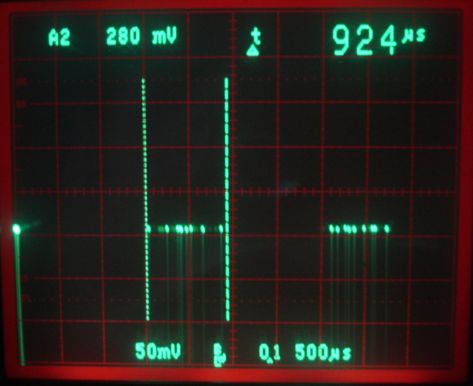Subcutaneous Transmitters
Presentation for the Institute of Neurology, UCL
04-NOV-2010

Kevan Hashemi
Open Source Instruments Inc.
www.opensourceinstruments.com

The subcutaneous transmitter (SCT) system is the result of a five-year collaboration.
In London: the Institute of Neurology (Matthew Walker and Pi-Shan Chang).
In Boston: Open Source Instruments (Kevan Hashemi, Jim Bensinger, Michael Bradshaw)
The SCT system is designed for:
Seizure-detection developed in rats at ION, London, 2005-2010.
Seizure-detection improved in rats at Harvard Children's Hospital, Boston, 2010.
High-frequency (70-160 Hz) power detection used in rats at ION, London, 2010.
New, smaller transmitter developed for Louise Upton of Oxford University, 2010.
First mice experiments expected at Oxford University in 2011.



A3013A: Epoxy body coated with silicone, volume 2.4 ml, operating life >8 wks, shelf life 32 wks, sample rate 512 Hz, analog bandwidth 0.2-160 Hz, dynamic range 9 mV, white noise 12 μV, hum <1 μV, 500-μm diameter steel springs coated with silicone, steel screw electrodes, radio-frequency transmission at 910 MHz.

A3019A: Volume 1.0 ml, operating life 4 wks, shelf life 60 wks, sample rate 512 Hz, analog bandwidth 0.7-160 Hz, dynamic range 20 mV, white noise <12 μV, hum <1 μV, 400-μm diameter steel springs coated with silicone, steel screw electrodes, radio-frequency transmission at 910 MHz.

A3019D: Volume 2.2 ml, operating life 19 wks, shelf life 300 wks, sample rate 512 Hz, analog bandwidth 0.7-160 Hz, dynamic range 20 mV, white noise <12 μV, hum <1 μV, 400-μm diameter steel springs coated with silicone, steel screw electrodes, radio-frequency transmission at 910 MHz.

Anti-aliasing filter for 512 SPS (samples per second):

For different sample frequencies, have different filters.

Transmission is unreliable, but still effective with >80% of messages.
We hope for robust reception, with >80% reception ≥95% of the time.

Competeing sources of 902-928 MHz power is interference.
At range 50 cm, received message power varies by four orders of magnitude with orientation and position.
When signal is weak, strong interference in a city like London will overwhelm messages.
Faraday enclosures shut out 99.9% of interference, and guarantee robust reception.
The FE2B faraday enclosure is 71 cm × 71 cm × 33 cm. Fits two animal cages.
Could make much larger enclosures or single-animal enclosures.
Within a faraday enclosure, are confident of 3-m operating range.
The Neuarchiver records raw data to disk in archive files and generates summary data called characteristics files.

Characteristics files are, by default, text files with numbers in them.
Characteristics file provides basis for seizure-detection.
We use Tcl scripts to detect seizures, but any other programming language is fine.
Seizure detection produces another text file: and event list.
The Neuroarchiver can step through the event list to display alleged seizures.
Reception appears to be robust with up to eight animals and one receiver.
Battery life is at least eight weeks with a fresh A3013A.
New rat transmitter has battery life 19 weeks at 512 SPS.
Hope to be using 1.0-ml transmitter in mice in 2011.